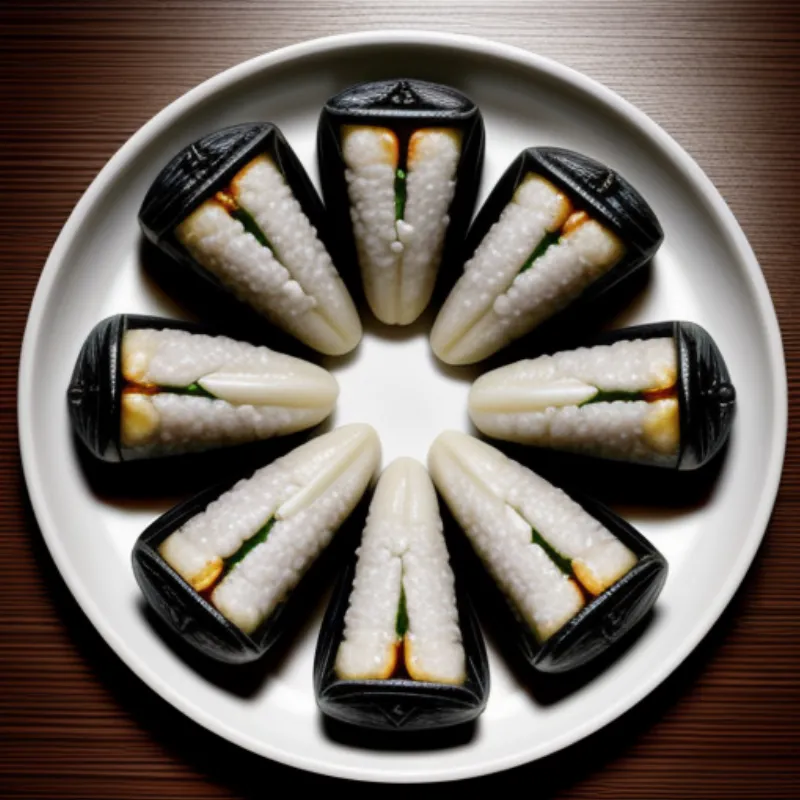Steamed zongzi, also known as rice dumplings or sticky rice dumplings, are a beloved Chinese delicacy traditionally enjoyed during the Dragon Boat Festival. These flavorful parcels of glutinous rice, filled with savory or sweet ingredients, are wrapped in bamboo leaves and steamed to perfection. Join me as we unravel the secrets of making steamed zongzi, bringing a taste of tradition and delight to your kitchen!
Unveiling the Delights of Zongzi
Imagine unwrapping a fragrant pyramid of bamboo leaves, revealing a glistening treasure of perfectly cooked glutinous rice. As you bite into the zongzi, you’re greeted with an explosion of flavors – the richness of the rice, the savory notes of marinated pork belly, the sweetness of red bean paste, or the delightful crunch of salted duck egg yolk.
“Making zongzi is a labor of love,” shares renowned food blogger, Lisa Lee, “but the end result is incredibly rewarding. The aroma that fills the kitchen as they steam, the anticipation of unwrapping these little bundles of joy, and the explosion of flavors make it all worthwhile.”
Essential Ingredients for Scrumptious Steamed Zongzi
To embark on this culinary adventure, gather these key ingredients:
For the Zongzi:
- 2 cups glutinous rice (also known as sweet rice), soaked in water for at least 4 hours
- 1 package (about 20 pieces) dried bamboo leaves, soaked in warm water for at least 1 hour
- Kitchen twine or string for tying
For the Filling (Choose your favorite):
-
Savory Fillings:
- 1 pound pork belly, cut into 1-inch cubes
- 4-6 dried shiitake mushrooms, soaked and sliced
- 2 tablespoons soy sauce
- 1 tablespoon oyster sauce
- 1 tablespoon Shaoxing wine
- 1 teaspoon sugar
- 1/2 teaspoon salt
- 1/4 teaspoon white pepper
-
Sweet Fillings:
- 1 cup red bean paste
- 4-6 salted duck egg yolks (optional), steamed for 10 minutes
Tip: Feel free to experiment with other fillings like mung beans, lotus seeds, or chestnuts!
Tools of the Trade
Before we begin, let’s gather the necessary tools:
- Large bowl for soaking rice and bamboo leaves
- Medium-sized pot for cooking the filling (if using)
- Large pot or steamer for steaming the zongzi
- String or kitchen twine for tying
Step-by-Step Guide to Steamed Zongzi Perfection
-
Prepare the Bamboo Leaves: Gently rinse the soaked bamboo leaves under running water. Trim off the hard stems at the bottom of each leaf.
-
Prepare the Filling (if using):
- Savory Filling: Marinate the pork belly with the soy sauce, oyster sauce, Shaoxing wine, sugar, salt, and white pepper for at least 30 minutes. In a separate pan, sauté the mushrooms until softened. Set aside.
- Sweet Filling: No cooking required for red bean paste and salted duck egg yolks.
-
Assemble the Zongzi:
- Take two bamboo leaves and overlap them by about two-thirds, forming a cone shape.
- Place a spoonful of glutinous rice into the cone, creating a well in the center.
- Add your desired filling, ensuring it doesn’t overflow.
- Top with another spoonful of glutinous rice, covering the filling completely.
- Fold the sides of the bamboo leaves over the rice, enclosing it tightly.
- Fold the remaining part of the leaves towards the back, securing the shape.
- Tie the zongzi firmly with kitchen twine, making a neat knot.
-
Steam the Zongzi: Fill a large pot or steamer with water and bring it to a boil. Place the zongzi in the steamer basket, making sure they are not overcrowded. Steam over high heat for 2-3 hours, adding more water to the pot as needed.
-
Serve and Enjoy! Carefully remove the zongzi from the steamer and let them cool slightly before serving. Unwrap the bamboo leaves to reveal the delicious treasure within.
Tips for Zongzi Triumph
- Soaking is Key: Soaking the glutinous rice and bamboo leaves is crucial for achieving the perfect texture. Soaking the rice allows it to soften and cook evenly, while soaking the leaves makes them pliable and less likely to tear.
- Filling Variations: Feel free to get creative with your fillings! You can experiment with different meats, vegetables, beans, and even sweet fillings like taro paste or lotus seed paste.
- Testing for Doneness: To check if the zongzi are cooked, insert a skewer or toothpick into the center. If it comes out clean, they are ready.
- Storage: Leftover zongzi can be stored in the refrigerator for up to 3 days. To reheat, steam them for 15-20 minutes or until heated through.
Delicious Pairings and Serving Suggestions
Steamed zongzi can be enjoyed on their own or paired with a variety of sides. For a savory treat, serve them with a dipping sauce of soy sauce, chili oil, and chopped scallions. Sweet zongzi can be accompanied by a cup of hot tea or enjoyed as a dessert.
FAQs: Your Zongzi Queries Answered
Q: Can I use fresh bamboo leaves instead of dried ones?
A: Yes, you can use fresh bamboo leaves. However, they need to be blanched in boiling water for a few minutes to soften them before use.
Q: My zongzi turned out mushy. What went wrong?
A: Over-steaming can cause the zongzi to become mushy. Make sure to check for doneness after 2 hours of steaming.
Q: Can I freeze zongzi?
A: Yes, you can freeze cooked zongzi for up to 2 months. Thaw them overnight in the refrigerator before reheating.
 Steamed Zongzi Platter
Steamed Zongzi Platter
 Wrapping Zongzi
Wrapping Zongzi
Embrace the Art of Zongzi Making!
Making steamed zongzi is a wonderful way to connect with Chinese culture and culinary traditions. It’s a dish that brings people together, creating lasting memories around the dinner table. So, gather your ingredients, follow these steps, and savor the deliciousness of homemade steamed zongzi. Happy cooking!
If you enjoyed this recipe, you might also like our guide on How to Make Bachang, another type of delicious rice dumpling.
